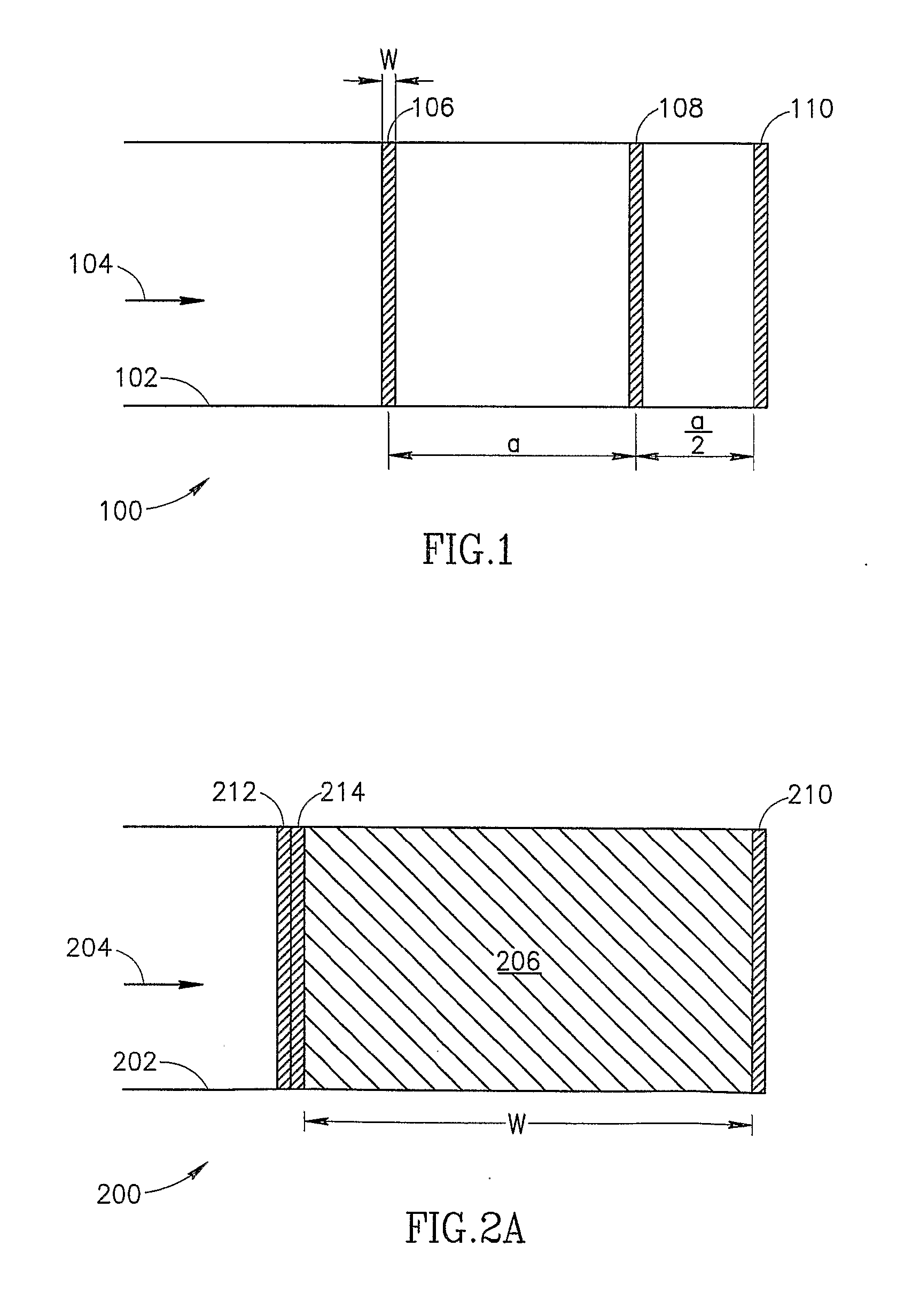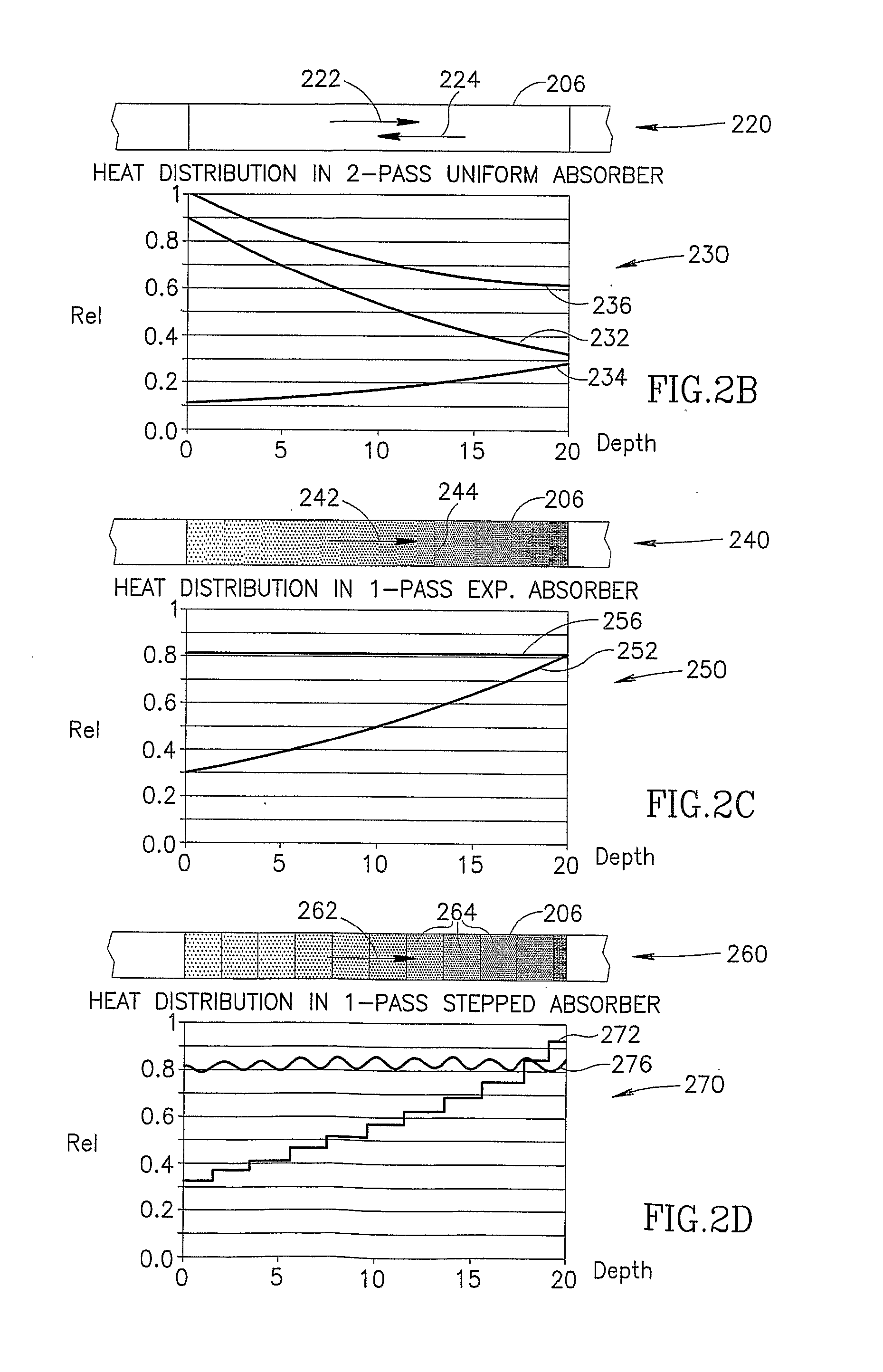Ultrasonic transducer probe
a transducer and ultrasonic technology, applied in the field of ultrasonic transducer probes, can solve the problems of generating acoustic disturbance propagating away, constraining the ability to reduce the cross-section of the device, and limiting the design
- Summary
- Abstract
- Description
- Claims
- Application Information
AI Technical Summary
Benefits of technology
Problems solved by technology
Method used
Image
Examples
Embodiment Construction
[0102]FIG. 1 is a schematic illustration of an ultrasound generating optical fiber 100, in accordance with an exemplary embodiment of the invention. Fiber 100 includes a body 102 through which a pulse (or train of pulses, or another waveform such as a saw-tooth or Gaussian form) of electro-magnetic radiation 104 (indicated by an arrow), for example infra-red, ultraviolet or visible light, propagates. At least some of the illumination is absorbed by an absorber 106, thereby heating it and causing it to expand abruptly and emit an ultrasonic wave. This wave is typically a multi-spectral wave. As explained in the following, however, the spectrum and / or direction of the wave may be manipulated.
[0103]Potential advantages of using guided-volumetric absorption are:
[0104](a) The generating radiation can be guided through the absorption process and is thereby confined laterally. Lateral spreading of the generating wave through the absorption process as would occur in unguided situations wher...
PUM
 Login to View More
Login to View More Abstract
Description
Claims
Application Information
 Login to View More
Login to View More - R&D
- Intellectual Property
- Life Sciences
- Materials
- Tech Scout
- Unparalleled Data Quality
- Higher Quality Content
- 60% Fewer Hallucinations
Browse by: Latest US Patents, China's latest patents, Technical Efficacy Thesaurus, Application Domain, Technology Topic, Popular Technical Reports.
© 2025 PatSnap. All rights reserved.Legal|Privacy policy|Modern Slavery Act Transparency Statement|Sitemap|About US| Contact US: help@patsnap.com



